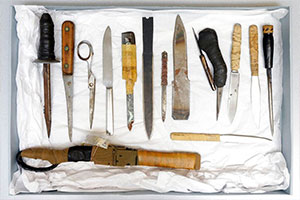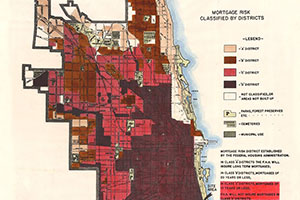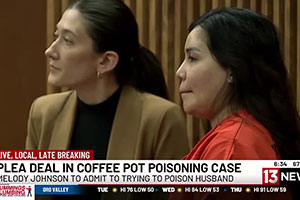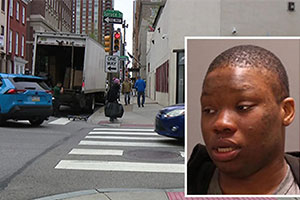1975 Indiana Cold Case Solved: Long Wait for Justice
NEWS | by
In the heartland of Indiana, amidst the seemingly peaceful streets of Indianapolis, a cold case that haunted the city for nearly half a century finally found resolution, unraveling a tale of horror, survival, and the relentless pursuit of justice.
The Fateful Day: August 1975
It was a warm summer day in August 1975. Three young girls, Kandice Smith, 13, Sheri Rottler Trick, 11, and Kathie Rottler, 14, embarked on what they thought would be a typical adventure for teenagers. After a stop at a local gas station, they decided to hitchhike home. Little did they know, this decision would lead them into the clutches of a sinister predator.
The Nightmare Unfolds
A white vehicle pulled up, driven by a man who seemed harmless enough at first glance. Thomas Edward Williams, a name that would remain unknown for decades, offered the girls a ride. Naively trusting, they climbed into the front seat, with Kathie sitting next to Williams. But as they neared their destination, a chilling realization dawned upon them – Williams had no intention of letting them go.
As Kathie pointed out their intended stop, Williams coldly accelerated, ignoring her protests. Panic set in when they discovered the door lacked a handle. Kathie’s attempt to press the brake was futile; her leg was too short to reach it.
The Cornfield: A Scene of Terror
Williams drove them to a secluded cornfield, a place where screams could be easily muffled by the rustling stalks. With a gun and threats of death, he coerced their compliance. He bound two of the girls and brutally assaulted the third, before stabbing her and slicing her throat. He then turned his knife on the others, stabbing them repeatedly.
In a desperate bid for survival, the girls played dead, a decision that likely saved their lives. Bleeding and injured, Rottler and Smith managed to escape the cornfield, their will to live guiding them to a nearby road where they were eventually rescued.
A Case Gone Cold
Despite the girls’ miraculous survival and the creation of a composite sketch, the case quickly went cold. The perpetrator remained a shadow, a specter haunting their lives and the community’s conscience.
Breakthrough: The Case Reopens
Fast forward to 2018. Advancements in forensic genealogy and DNA technology breathed new life into the investigation. The IMPD Unsolved Homicide Unit, spearheaded by investigator David Ellison, reopened the case. They combed through old evidence, searching for the elusive key that would unlock this decades-old mystery.
The Culprit Revealed
Then, in a dramatic turn of events, the DNA recovered from the crime scene was matched with that of Williams’s daughter. Thomas Edward Williams, who had lived near the kidnapping site and died in a Texas prison in 1983, was posthumously identified as the assailant. This revelation was announced in a press conference that left many in disbelief.
Survivors Speak: A Testimony of Resilience
The three survivors, present at the IMPD announcement, shared their harrowing testimonies. They spoke of the ordeal and the decades of pain and uncertainty that followed. Kathie Rottler’s words echoed the sentiment of patience and the enduring hope for justice. She recounted the countless calls and dead ends, the years of waiting for an answer that seemed would never come.
Closure, But Not an End
For the survivors, Williams’ identification was a bittersweet conclusion. While it brought a sense of closure, it also resurfaced painful memories. The fact that Williams had passed away years ago meant that he would never face the consequences of his actions in a court of law.
Reflecting on Justice and Survival
The case of Thomas Edward Williams and his three young victims is a haunting reminder of the fragility of innocence and the enduring impact of violent crimes. It underscores the importance of advancements in forensic science and the tireless work of law enforcement in bringing closure to cold cases.
The story of that fateful day in August 1975, and the decades-long quest for justice that followed, will remain etched in the annals of Indianapolis’ history. It’s a narrative that intertwines tragedy with resilience, despair with hope, and ultimately, a delayed yet pivotal triumph of justice.













